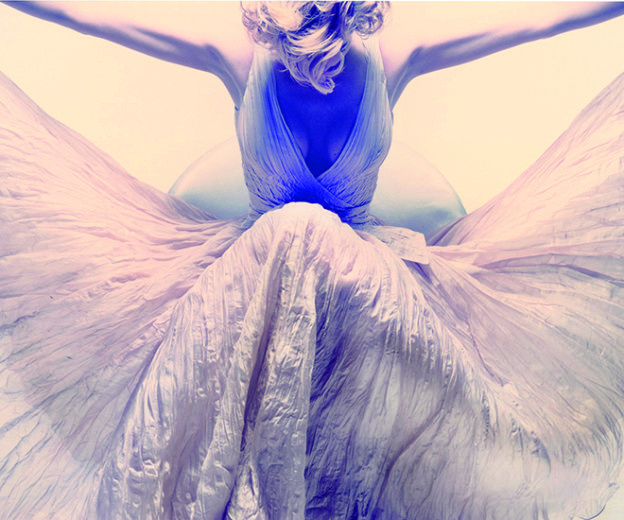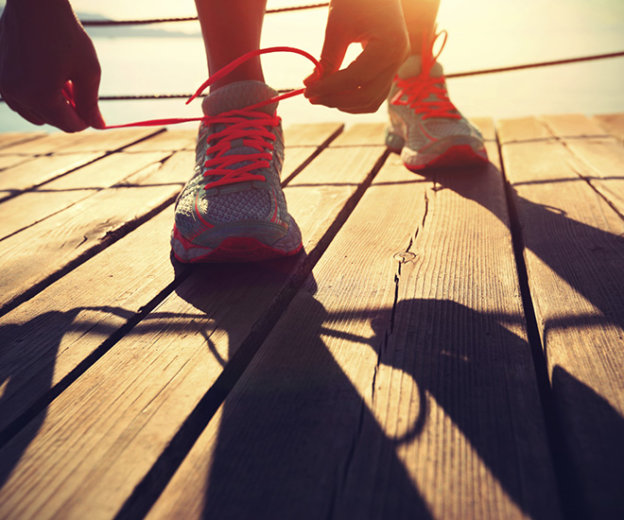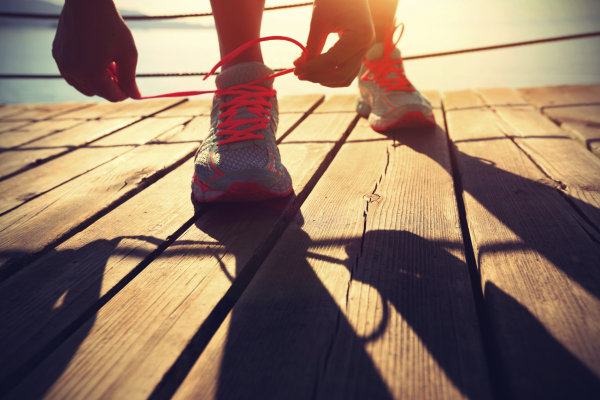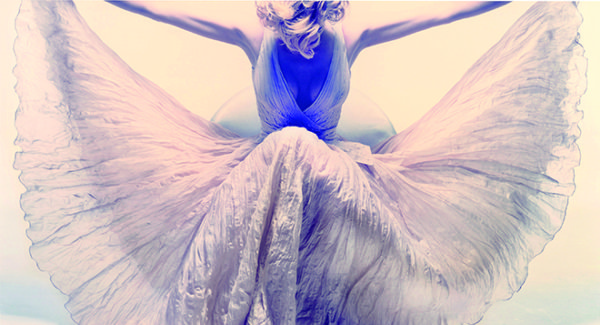
Nick Knight, “Jill Sander, 1992”, was sold at Phillips’ 2016 20th Century and Contemporary Art and Design Autumn sale in Hong Kong.
The art world today has undergone many changes from times past. Traditional epicentres (New York and Paris) are giving way to new hubs across in the East, Asian art is quickly seeing a rise in prominence and significance, and collectors themselves are developing greater interest and participation in the international art market, traversing from fair to fair, to biennials, galleries and auctions.
As we enter a new calendar (and season) of exciting showcases both regionally and abroad, PALACE speaks to the experts to find out what the leaders in the industry have to say about how best to purchase and collect art. From consulting with art specialists and advisors, to gallerists and auction professionals, we hope that you’ll be inspired with our guide of 10 golden rules to acquiring art right.
1 | Buy with your heart
For Nicole Tee, General Manager of Christie’s South East Asia, buying art should be a form of “passion investment”. “We recommend buyers or collectors to pick pieces that they would get aesthetic pleasure from”, she says. “That way”, she adds, “the piece of art will have ‘longevity’ in the eyes of the collector”. Another important thing is to buy the best within your budget. “Different artists or art styles command different price bands, and it is far better to buy the top pieces of a certain artist (even if he or she may be less well-known) than the lower-quality pieces of the hottest artist”, says Nicole.
2 | Know the art market
“Japan and Hong Kong have always been strong art markets, and in more recent years, China”, observes Stéphane Le Pelletier, Director of Opera Gallery Asian Pacific. He cites South East Asian art in particular, traditionally dominated by Indonesian art, as increasingly gaining attention in the international art market. Additionally, “we are seeing an ever-growing demand for contemporary art in the region, as demonstrated by the proliferation of private museums in China, with international institutions, mega-galleries and leading art fairs bringing the highest quality works to the region”, notes Sandy.
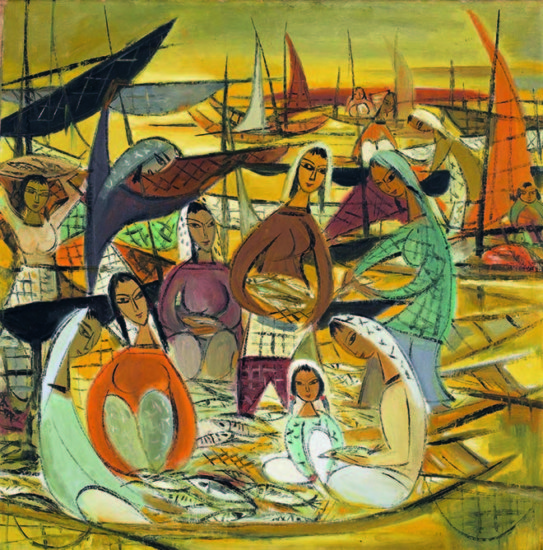
Lin Fengmian, “Fishing Village”, one of the highlights of Christie’s Asian Contemporary Art Autumn sales 2016.
3 | Do your research
There is no fixed formula to purchasing art, though building one’s knowledge is crucial to making informed acquisitions. “Educating oneself comes first”, says Sandy Ma, Head of Phillips’ Hong Kong Evening Sale, and a specialist in Asian 20th Century and Contemporary Art. “Start by exploring, visit museums, galleries, fairs and auctions to figure out what style you like. Research is also essential and it is important to read up on an artist to see if they have sales history”, she adds. Having a good eye is also an important aspect according to Emily Johnston, Managing Director of Larkspur Art Specialists. “Training your eye comes from looking at a great range of art and looking closely enough to understand how the artwork was made”, she says. That way, one acquires a good instinct for what is trending, and it would be simpler to identify things like when an emerging artist or art movement is in demand.
4 | Consult or hire an expert
“When you begin to spend a decent amount on art, you should hire a consultant”, Emily says. “It takes time to navigate the intricacies of the market and work out whether something will make a good purchase.
Art consultants are independent and their job is to show you a wide range of art and to do thorough research so that you can make a well-informed decision. They should also be able to negotiate a discount on your behalf”.
Similarly, art specialists offer invaluable advice from evaluating works of art, to providing in-depth colour of the artist and where the piece of work falls within his oeuvre, to offering price guidance.
5 | Know what to look out for
Nicole highlights some key factors to take note of before making an art purchase:
Medium – The materials used can determine the value of an art piece. For example, oil paintings are generally more valuable than works on paper and prints.
Condition – Look at the condition of pieces and request for condition reports. Make sure that the art you are looking at is in good condition and built to last.
Period – Identify the period or movement an art piece is from, and consider if it was created when the artist was at his/her peak, or when they were not at their best, or even during an iconic period from the artist.
Freshness to the market – The art market is affected by the primary art market, where new art comes to the market for the first time, and the secondary market, for existing art that has been sold at least once before. The prices for which a work was sold in the primary market usually has a direct bearing on the work’s value in the secondary market.
Provenance – Ensure that the provenance of the piece has been verified before you proceed with a purchase. Good provenance increases an art piece’s collectability, desirability, market value, and also proves that it is by the artist.
6 | Structure your collection with a focus
There is no fixed philosophy to building an art collection, though having strategy and a focus on aspects such as a common theme or subject matter, is key. Emily urges collectors to specialise in art from a region, from a particular period or motivated by links between artists. “Without specialising”, she adds, “it can be difficult to develop your expertise and your art collection will feel disconnected. By specialising you will also form good relationships with the most relevant dealers”.
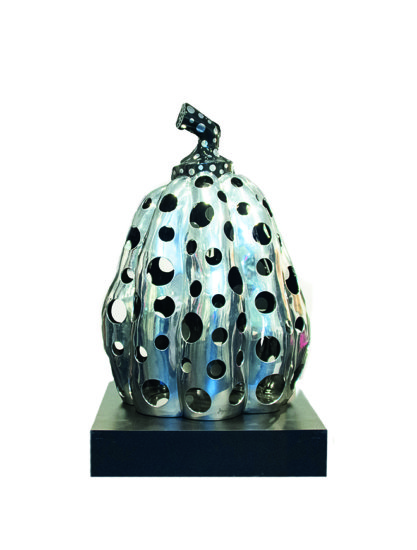
Yayoi Kusama, “Reach up to Heaven Dotted Pumpkin”.
7 | Live with and care for your masterpieces
“Anyone buying art should be driven first and foremost by the art itself, and we highly encourage collectors to live with their artworks”, says Sandy. However, it is also important that artworks are displayed in an appropriate setting, be it indoors or outdoors. For works on paper, it is important that the artworks are framed using acid-free mounts, says Emily. “These mounts reduce the amount of moisture entering the paper and prevents discolouration”, she explains. Stéphane also recommends storing and displaying art in a well ventilated or even air-conditioned environment to counter the humidity of the South east Asian climate. Most importantly, he cautions, “do not expose artwork to direct sunlight”. To protect art pieces, consider having a UV Plexiglas when getting them framed in order to impede colour fading. When displaying pieces in the home, consider the total height of the work, any adjustments to be made for furniture, as well as the overall space that you envision the piece to be placed in.
8 | Seek out auctions
“With online auctions growing in importance, new collectors have growing accessibility to a repertoire of offerings across different categories (prints, photographs, interiors, paintings, etc.) and price points”, explains Nicole.
In order to become familiar with the auction process, do spend time researching on categories or pieces of work that catch your interest. Start by visiting auction sites to see what is coming up for sale, and browse auction house catalogues for information about the pieces that are up for bidding, says Nicole. It is also advisable to view the items you are interested in. Public viewing usually takes place three to four days before the sale date, and interested buyers are welcome to preview the lots and speak to specialists to get further information and perspectives.
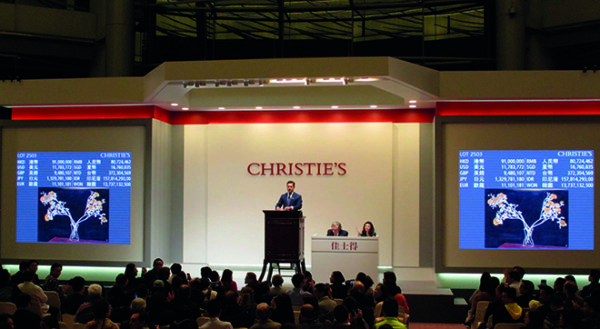
9 | Visit fairs and exhibitions
Looking around art fairs and exhibitions is important for those who desire to hone or fine-tune their taste and preference for art. They provide excellent exposure for both artists and galleries alike, enabling them to reach out to a wider group of art lovers and collectors, says Stephane.
The international art calendar is filled with plenty of such events bringing together hundreds of dealers and exhibitors in one location. A good place to start is at major art fairs both in the region and overseas. For example, Art Stage Singapore (January), TEFAF (March, May, October), Art Basel Hong Kong (March), the original Art Basel in Switzerland (June), Frieze London (October), and Art Stage Jakarta (August). For those interested in auctions, Nicole recommends Christie’s First Open in Hong Kong in March, where emerging artists and artworks are offered at accessible price points.
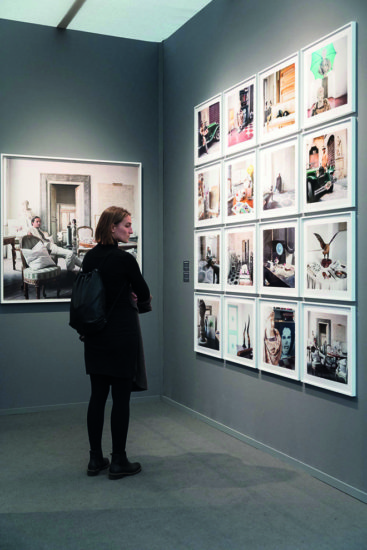
10 | Think digital
The rapid growth of the digital marketplace has changed the way art is being viewed, marketed, and acquired. Information is now instantaneously shared to a global audience via social media platforms like Instagram and WeChat, and E-commerce as well as digital sales have become effective methods of connecting to international art buyers. For example, “through Christie’s LIVE, clients can bid in a live auction via their computers”, shares Nicole. Collectrium, a leading digital art collection management service acquired by Christie’s, “is the only platform in existence that integrates all collection tips, care and management tools into a single experience that is comprehensive, mobile, and secure”, she adds. With the advent of the digital age, acquiring art has never been so globalised and convenient.
Words by Olivia Lock. Adapted from: Palace #18.
